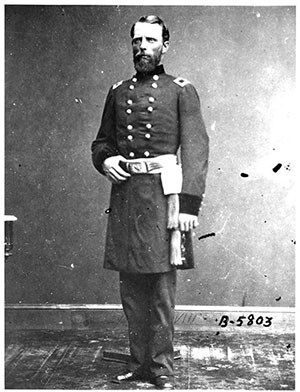Commanding OfficersMaj. Cuvier Grover & Capt. Henry AsburyAfter Maj. Hiram Dryer left in April there was a quick turnover of post commanders at Fort Larned during the Spring and Summer. Lt. James Cahill, 2nd U.S. Cavalry assumed command from Maj. Dryer on April 26th, only to be relieved on May 6th by Maj. Cuvier Grover. For the rest of the year, the command of Fort Larned would alternate between Maj. Grover and Capt. Henry Asbury. Although the government had made peace with the area Indians, the Army was apparently not taking any chances. In May, the Department of Missouri Headquarters issued General Order No. 27, instructing post commanders to make certain that defensive measures were carried out before allowing wagon trains to proceed. The traders were not waiting on the Army, though, and by July 20th a total of 582 wagons had passed by Fort Larned accompanied by 634 armed men. |

Public Domain By June 15, Capt. Asbury replaced Maj. Grover as post commander. According to H.M. Stanley, noted journalist for Harper’s Weekly, Asbury commanded the fort with orderliness and precision and all activities were carried out strictly to military code. He also noted that the officers were “affable to their equals and gracious towards their subordinates.” |
Last updated: February 14, 2024
